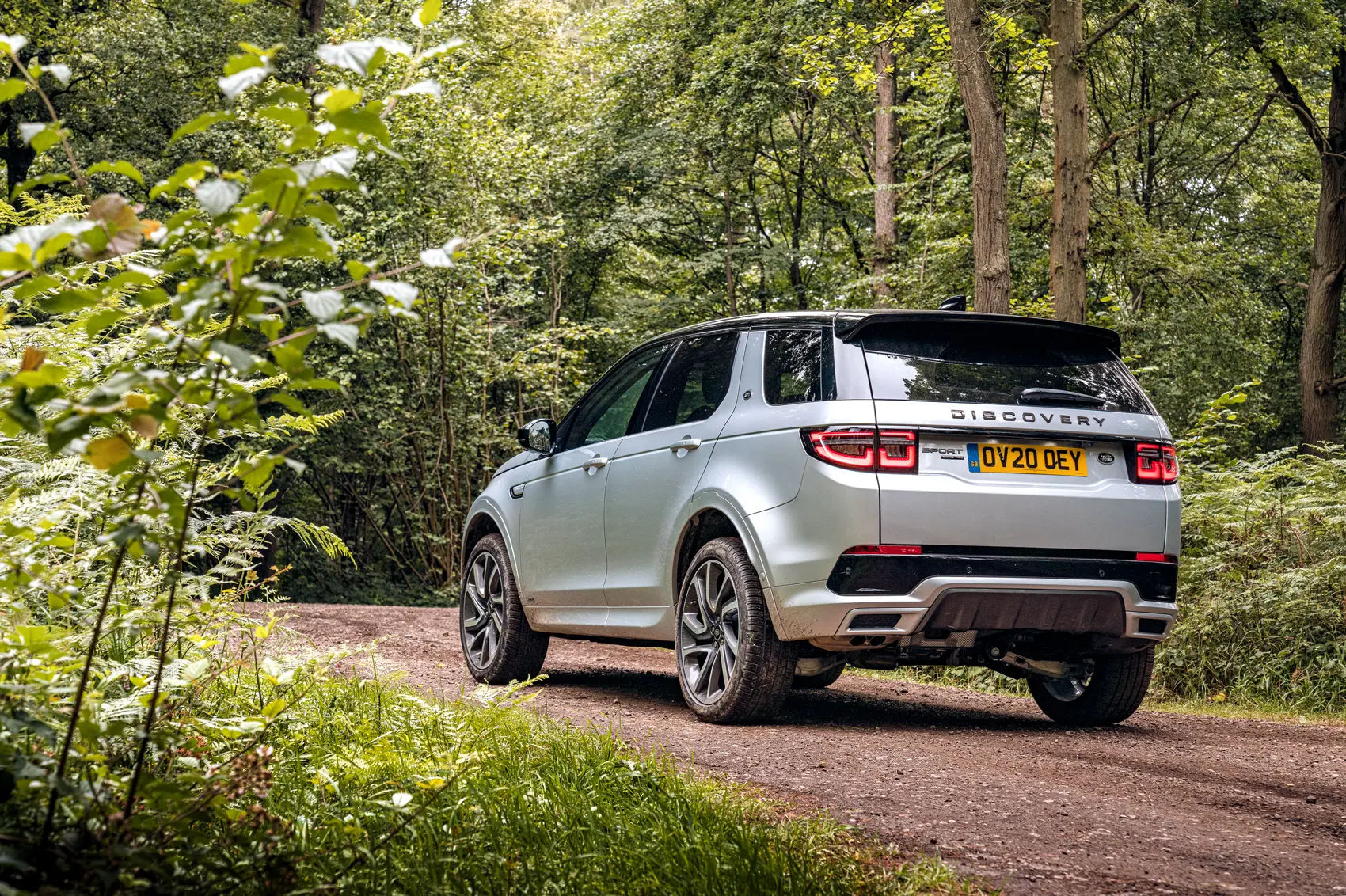When you’re shopping for a new vehicle, reliability should be one of your top priorities. Whether you’re facing a daily commute or planning a long road trip, the last thing you want is to be stranded with car trouble.
To help guide your decision, we’ve rounded up 20 of the most dependable cars currently on the market—vehicles that are known to go the distance with minimal mechanical issues. These include everything from fuel-efficient sedans to rugged SUVs, all of which have earned a strong reputation for lasting well beyond expectations.
5 Cars That Always Start When You Need Them
When it comes to dependability, few things are more important than a car that starts every time you turn the key (or press the button). Whether you’re heading to work, embarking on a road trip, or just running errands, having a reliable vehicle can make all the difference.
In this article, we’ll highlight five cars known for their exceptional reliability and unwavering ability to start when you need them most. These vehicles are the ones you can count on, no matter the season or circumstance, offering peace of mind and performance that never lets you down.
Also Read: 5 Best and 5 Worst Ford Eco-Boost Engines To Know
2025 Toyota Camry SE AWD
Take the Toyota Camry, for example. The 2025 Toyota Camry SE AWD continues the model’s legacy of being one of the most reliable sedans available. Much of its success stems from Toyota’s dedication to engineering excellence, particularly in its engine and transmission design.
As long as owners stick to regular maintenance—such as timely oil changes and brake servicing—the Camry can easily surpass 200,000 miles without major issues. And if repairs are ever needed, Toyota’s extensive service network makes it simple to find replacement parts and qualified technicians, further reducing long-term ownership stress.
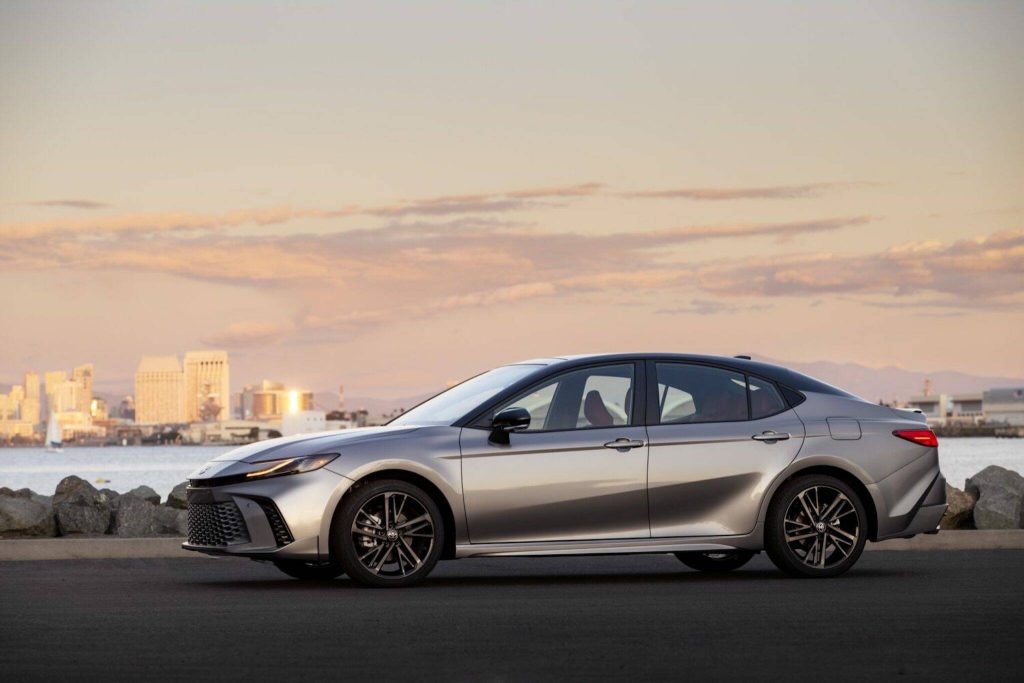
The Toyota Camry Hybrid might not be the flashiest option on the market, but it remains a favorite for buyers who prioritize affordability, interior space, and fuel efficiency. For the 2025 model year, Toyota has refreshed the Camry’s design and taken a decisive step toward efficiency by eliminating the once-diverse powertrain lineup.
Whereas last year’s offerings included a V-6 and both hybrid and nonhybrid four-cylinder engines, the 2025 Camry now comes exclusively with two hybrid options. Buyers can choose between front-wheel-drive and all-wheel-drive configurations, with the new hybrid setup generating up to 232 horsepower.
While Toyota has not officially introduced one yet, there is speculation that a more powerful plug-in hybrid model, potentially called the Camry Prime, could be on the horizon.
Inside, the cabin has been updated with a modernized infotainment system and styling cues drawn from Toyota’s larger Crown sedan. Even with the redesign, the Camry Hybrid sticks to its roots as a mid-size sedan focused on competing with rivals like the Honda Accord and Hyundai Sonata.
2025 Toyota Corolla Hybrid
Next is the Toyota Corolla, with the 2025 Toyota Corolla Hybrid offering the same consistency that has made the model a household name. The Corolla’s engine and transmission are designed for low-maintenance operation, which directly translates to lower ownership costs.
Corolla owners spend an average of $362 annually on repairs, compared to the $526 average for other vehicles. Additionally, Corolla drivers report only about 0.3 trips to the mechanic per year. Out of 36 compact cars, the Corolla claimed the number one spot—no small feat for a car in such a crowded segment.
The Corolla Hybrid finds its closest rival in the hybrid version of the Hyundai Elantra, but buyers might also compare it to other vehicles within the Toyota lineup such as the Corolla Cross Hybrid and the Prius, as well as the Kia Niro hatchback. For those not interested in a hybrid option, the standard Corolla is still available.
For 2025, there are a few updates worth noting. A 10.5-inch infotainment touchscreen is now available for the SE trim and comes standard on the XLE. The Nightshade Edition package has been discontinued, and there’s new badging on the rear of the vehicle.
From our perspective, the Corolla Hybrid presents itself as a compact, highly efficient four-door car that is more accessible than the Prius. However, it makes one significant trade-off: performance.
While most compact hybrid buyers may not place acceleration at the top of their list, the Corolla Hybrid is notably slow—so much so that it could hinder merging or passing in certain situations. This lack of performance is something drivers will definitely notice.

Aside from that drawback, the 2025 Corolla Hybrid is a mostly well-rounded offering. The ride quality is comfortable, Toyota now provides an AWD variant, and the car handles curves with a respectable amount of composure.
Toyota also includes a solid suite of driver-assist features even on base trims, but the cost-cutting becomes apparent in the interior’s material quality and the lack of sound insulation.
Ultimately, the Corolla Hybrid is a low-cost, fuel-efficient daily driver. However, if your budget allows for it, the base Prius is a better choice than a fully loaded Corolla Hybrid.
And unless you’re in urgent need of a new vehicle, it might be worth waiting—Toyota is expected to roll out a next-generation Corolla for the 2026 model year, promising updated styling, a more capable powertrain, and improved tech.
Under the hood, the 2025 Corolla Hybrid features a 1.8-liter inline four-cylinder engine paired with two electric motors, all working through a CVT to deliver power to either the front wheels or all four wheels.
The setup generates 138 horsepower and 105 lb-ft of torque, which translates to a 0–60 mph time of 10.3 seconds in FWD form, or 9.7 seconds with AWD—about 1.5 seconds slower than the standard Corolla. That said, the hybrid returns up to 50/43 mpg city/highway, offering a clear efficiency advantage over the standard Corolla’s 32/41 mpg.
For comparison, the 2024 Prius accelerates from 0 to 60 mph in just 7.2 seconds while delivering up to 57/56 mpg, making it a better all-around performer if you’re able to spend a bit more.
On the safety front, Toyota continues to impress by including Safety Sense 3.0 on every Corolla Hybrid. This suite of driver assistance features includes emergency braking, adaptive cruise control, lane keep assist, automatic high-beams, and more. Higher trims add blind-spot monitoring and rear cross-traffic alert.
The current-generation Corolla was named a 2023 IIHS Top Safety Pick and received a five-star overall rating from the NHTSA, reinforcing its standing as a safe and reliable compact car.
2025 Lexus LS
Then there’s the Lexus LS, including the 2025 Lexus LS, which represents the luxury arm of Toyota. Lexus vehicles benefit from the same core values of dependability, but with added attention to comfort, innovation, and high-end performance.
The LS undergoes frequent refinements to iron out potential flaws before they reach consumers, helping the car maintain strong reliability despite its complexity.
While repair costs can be higher due to its luxury status, the LS sees fewer visits to the mechanic than most full-size luxury sedans. And with Lexus’s comprehensive factory warranty, even those occasional repair bills are less of a burden.
The 2025 Lexus LS stands as the flagship sedan of the Lexus lineup. While it doesn’t draw as much attention as its German counterparts, it compensates with a more approachable price and a cabin that envelops passengers in comfort and meticulous craftsmanship.
The interior is plush and artistically detailed, continuing Lexus’s tradition of refined luxury. However, the current generation of the LS has now been in production for seven years, and its limited powertrain selection is starting to show its age.
Competing luxury sedans now offer greater horsepower and improved efficiency—sometimes delivering both in the same model—highlighting the LS’s shortcomings in this area.
Fuel costs for the 2025 Lexus LS 500 4dr Sedan (3.5L V6 Turbo 10-speed automatic) are estimated using a driving average of 15,000 miles per year, with a mix of 55% city and 45% highway travel, and an energy price of $3.91 per gallon for premium unleaded.
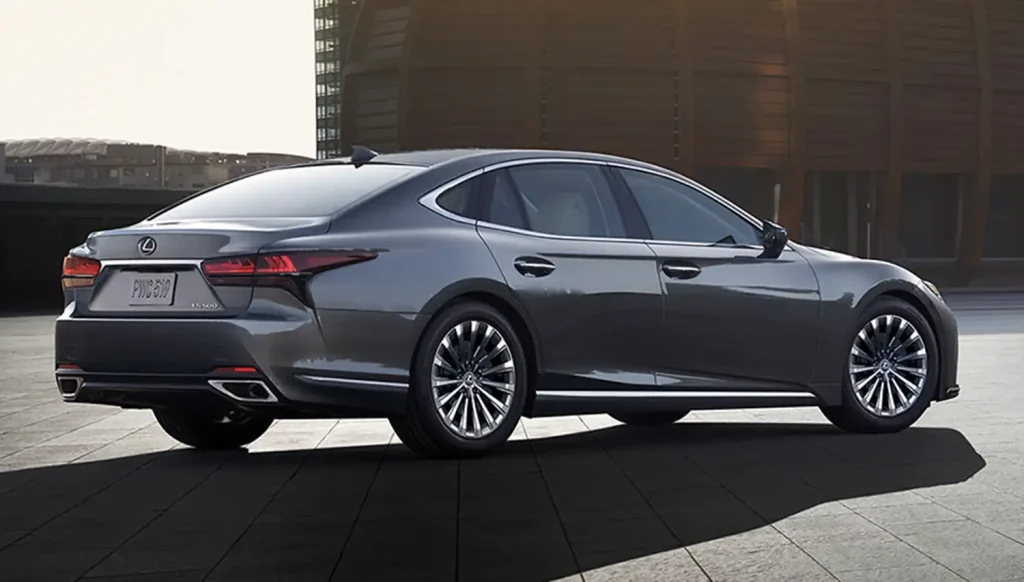
Based on these parameters, the monthly fuel cost is projected to be $213 for the LS 500, compared to an average of $194 per month for other large cars. These estimates give buyers a realistic idea of operating costs and help with budgeting.
When it comes to interior craftsmanship, the LS distinguishes itself with offerings that reflect traditional Japanese artistry, a theme rarely seen in this segment. Competing luxury sedans engage in a battle of opulence through lavish interiors and premium materials, but Lexus takes a more cultural and refined approach.
Unique trim options include Haku, a delicate metal foil with a distinct luster, and Kiriko glass, an ornate, hand-cut material that adds artistic elegance to the cabin—features unmatched by any other brand.
The Lexus LS’s traditional competitors include the Audi A8, BMW 7 Series, and Mercedes-Benz S-Class, but the Genesis G90 has emerged as a formidable contender as well. Interestingly, even the Genesis now commands a higher price than the LS, shifting the value proposition further in Lexus’s favor.
For buyers who prioritize advanced drivetrain technology, there are compelling alternatives such as the plug-in hybrid BMW 750e, the all-electric BMW i7, and the Mercedes-Benz EQS. These models offer cutting-edge electrification and performance, though often at a higher price point.
2025 Honda Civic Sedan Sport Touring Hybrid
The 2025 Honda Civic Sedan Sport Touring Hybrid continues the long-standing tradition of reliability that the Honda Civic nameplate is known for. Honda models frequently earn top spots on “most reliable” lists, and the Civic has remained a dependable choice for years.
Back in 2019, IHS Market—an internet services provider—analyzed 17.5 million new vehicle registrations and found that the Civic had the highest model loyalty of any car, a testament to how many people return to buy another after owning one. Maintenance costs for the Civic are also lower compared to many other vehicles, making it an economical choice over the long run.
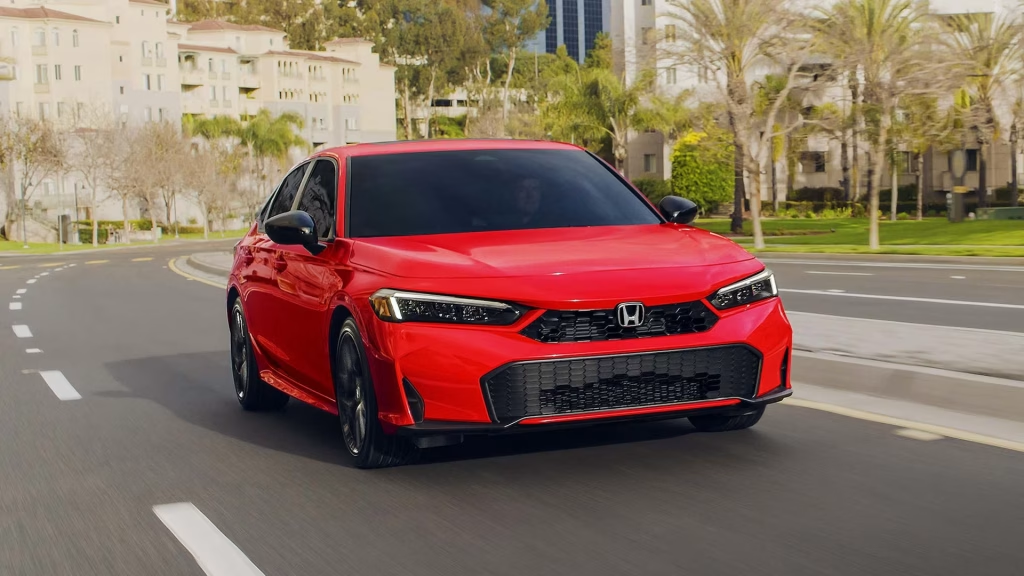
While only about 1 percent of all vehicles on the road manage to surpass 200,000 miles, 2.3 percent of those that do are Civics. Although the model had some reliability concerns in 2001 and 2006, it has consistently proven itself as one of the most desirable and enduring cars available today.
Also Read: Top 10 EV Features That Come in Useful in Daily Commute
2024 Lexus RX 350h
The 2024 Lexus RX 350h offers a compelling mix of comfort, performance, and durability, whether you choose the gas-powered version or the hybrid. This midsize SUV is thoughtfully engineered, delivering a smooth and composed ride backed by solid construction.
With routine maintenance, the RX is designed to last for years. Lexus takes a careful, conservative approach to engineering, using high-quality materials and emphasizing reliability over experimental features.
Each RX model undergoes rigorous testing and fine-tuning before it ever reaches the dealership, ensuring that what customers drive off the lot is both polished and dependable. For those seeking a luxury SUV that doesn’t sacrifice longevity, the RX stands out as a smart and well-balanced choice.
Since Lexus debuted the first luxury hybrid in 2006, many customers have been anticipating substantial fuel savings. The original 2006 Lexus RX 400h was a performance-oriented hybrid—it was quicker than the standard gas-only version but only slightly more efficient at the pump and considerably more expensive.
This trend persisted through two redesigns, frustrating buyers who believed fuel economy should be the primary benefit of owning a hybrid.
Fast-forward to today, electric vehicles have become the top choice for fuel-conscious drivers, and Lexus recently launched an electric SUV named the RZ. However, the automaker also introduced a hybrid that feels like the long-awaited answer to that original promise: the Lexus RX 350h.
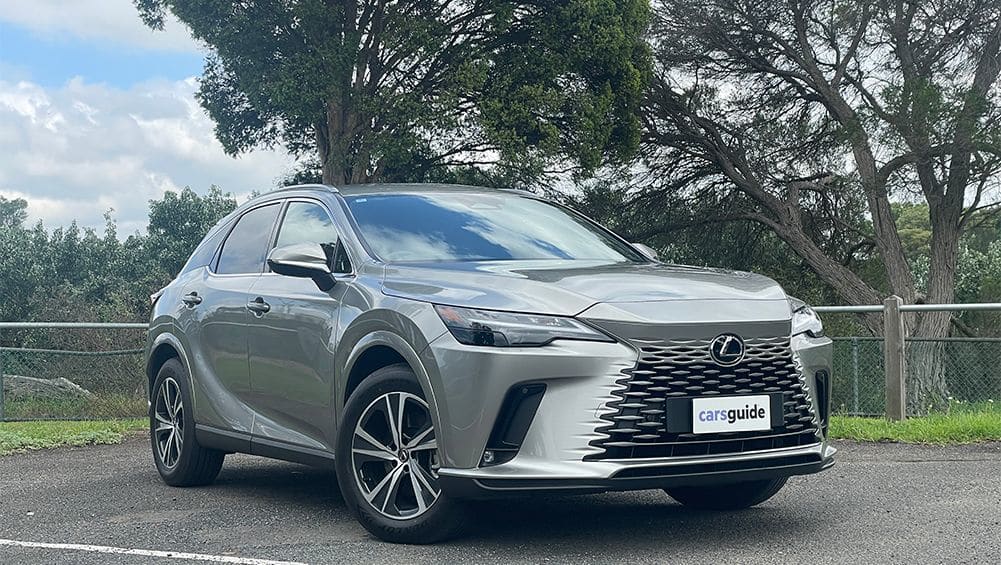
Now part of a fully redesigned RX lineup that debuted last year, the RX 350h trades brisk acceleration for remarkable efficiency, boasting 36 mpg in EPA testing—and all at a more reasonable price point. To get a real-world feel for its strengths and weaknesses, we spent a full week behind the wheel of the RX 350h. Keep reading to find out if it’s the right luxury SUV for your needs.
When it comes to pricing, there’s no penalty for going hybrid. The most affordable 2024 Lexus RX is the gas-powered RX 350, which starts at $48,600 with front-wheel drive and $50,200 with all-wheel drive. The hybrid RX 350h, which comes exclusively with all-wheel drive, is priced at $50,450, making it almost identical in cost.
While the RX 350 delivers a bit more speed thanks to its turbocharged four-cylinder engine producing 275 horsepower and 317 lb-ft of torque, the RX 350h offers a combined 246 horsepower and 233 lb-ft of torque through its gas engine and twin electric motors. For those not buying an RX for speed, the hybrid version emerges as the smart pick.
For those craving more performance, Lexus also offers a spiritual successor to the old RX 450h—the RX 500h. This turbocharged hybrid model churns out 366 horsepower and 406 lb-ft of torque, providing a sportier drive.
Additionally, the RX lineup includes the RX 450h+, a plug-in hybrid that delivers an estimated 37 miles of all-electric range before the gas engine is needed.
However, these upgraded variants come with a steeper price due to both their added performance and enhanced standard features. The RX 500h starts at $62,450, while the RX 450h+ begins at $70,080. Among them, the RX 350h stands out as the value champion of the RX lineup.
Under the hood, the 2024 Lexus RX 350h features the same hybrid technology Toyota has refined since the debut of the 2000 Prius. It uses a 2.5-liter gasoline four-cylinder engine paired with two electric motors.
These motors assist in acceleration, allowing the engine to work less and consume less fuel. They can also power the RX on their own during light driving conditions such as coasting, steady-speed cruising, or gentle acceleration.
The result is outstanding efficiency. According to EPA estimates, the RX 350h achieves 37 mpg in the city, 34 mpg on the highway, and 36 mpg combined.
During our testing, we matched that combined figure with an average of 37 mpg over the course of a week. These numbers outperform the old RX 450h’s 31/28/30 mpg ratings and our real-world average of 29 mpg from that model.
The gains are even more dramatic when compared to the original 2006 RX hybrid, which returned just 28/25/27 mpg. For comparison, the gas-only 2024 RX 350 gets 22 mpg city, 29 mpg highway, and 25 mpg combined, while the RX 500h hybrid returns 27 mpg city, 28 mpg highway, and 27 mpg combined.
One important note: the RX 350h’s efficiency advantage is most noticeable in stop-and-go traffic—on the highway, where the gas engine is more frequently engaged, the fuel savings begin to taper off.
Unreliable Cars That Leave You Stranded
If you’re looking to avoid vehicles that are prone to mechanical issues and are more likely to leave you stranded, it’s worth knowing which models have a history of poor reliability.
These cars tend to suffer from problems like engine failures, faulty transmissions, electrical gremlins, and other major systems breaking down prematurely. High repair frequency, expensive fixes, and low owner satisfaction ratings are common threads.
1. Fiat 500
While it has quirky charm and a compact footprint ideal for city driving, the Fiat 500 has been plagued by reliability issues. Common problems include automatic transmission failure, electrical system faults, and suspension issues.
Many owners report being stranded due to engine stalling or gear-shifting failures. Fiat’s reputation for long-term durability has consistently ranked near the bottom in reliability studies.
The most affordable version of the Fiat 500e is equipped with a 24kWh battery paired to a 94bhp electric motor. However, it’s not the variant we prefer. The official 0-62mph time of 9.5 seconds is rather sluggish by the standards of today’s electric vehicles. While the car performs adequately in stop-and-go city driving, it noticeably loses steam as you approach motorway speeds.
A more pressing concern is the limited range offered by the 24kWh battery. Fiat claims an official range of 115 miles, but our experience suggests you’re unlikely to reach that figure in real-world conditions. That falls short of the Honda e (which delivers 137 miles) and is considerably less than the Mini Cooper Electric.
The Fiat 500e does include a drive mode selector, letting you toggle between standard and Sherpa mode, the latter designed to maximize battery life by capping the top speed at 50mph. However, this feature can only be activated when the car is stationary, which we find inconvenient.
This 24kWh version is offered exclusively as a hardtop, so if you’re eyeing the 500 Cabrio, you’ll need to step up to the model with the larger 42kWh battery.
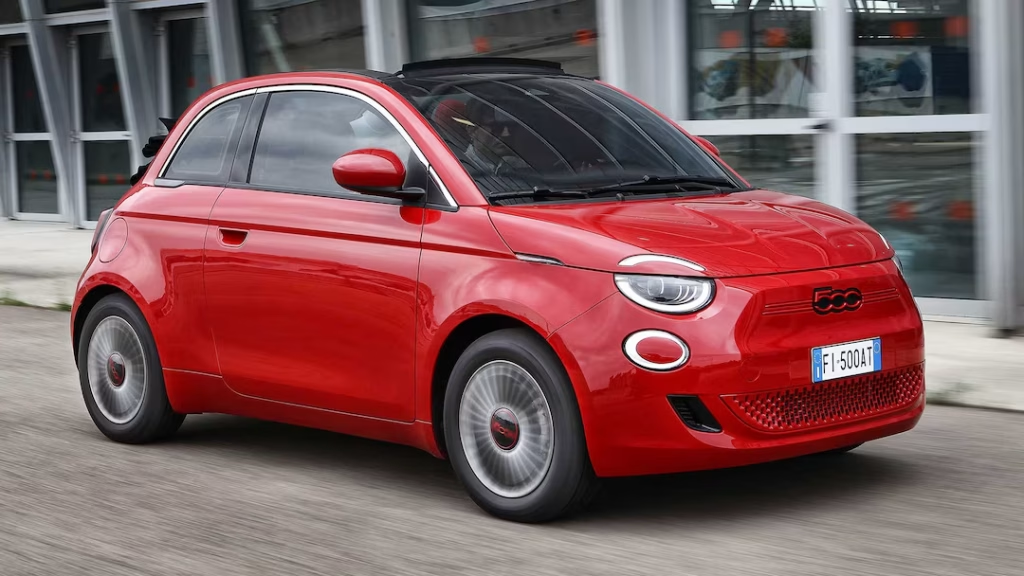
That said, even for those content with a hardtop, we’d suggest opting for the larger battery pack. For a relatively modest price increase, it offers a significantly extended official range between charges—186 to 199 miles, depending on trim—and livelier performance.
In our testing, the upgraded 117bhp electric motor in this variant accelerated the 500e from 0 to 60mph in 8.0 seconds. The acceleration is so immediate that it actually feels quicker than the numbers suggest.
2. Jeep Cherokee (2014–2015 models)
These early models of the Jeep Cherokee’s redesign are infamous for their 9-speed automatic transmission problems. Owners frequently report jerky shifting, failure to engage gears, and outright transmission failure. The engine stalling at low speeds has also been reported, making it a vehicle that can leave drivers stranded without warning.
By the time you read this, production at the Belvidere Assembly Plant in Illinois will have already ended, making the 2023 Jeep Cherokee the final model year of a vehicle that has been on sale in the USA for a decade.
While it’s clear the Cherokee has started to show its age, it still holds its own against more modern compact crossovers like the Honda CR-V and Toyota RAV4, thanks to its unique offering of a proper off-road model, something few competitors can match.
The Ford Bronco Sport in its Badlands trim presents a strong alternative to the Cherokee, being a more modern car that is also priced more affordably.
Despite not having changed much over the years, the Cherokee still looks stylish, and the final model year is just as capable off-road as it ever was. The current model lacks a hybrid version, but this will be addressed in the next generation, which is expected to feature electrification prominently.
The price for the 2023 Jeep Cherokee varies depending on the trim. The 2023 Jeep Cherokee Altitude Lux 4×4 starts at $37,695, while the Trailhawk 4×4 is priced at $41,295. These prices are the Jeep Cherokee’s MSRPs and do not include additional packages, options, or the destination fee of $1,595.
Even after all these years, the Cherokee still impresses once on the road. Unlike many of its soft-roader competitors, it feels like a true SUV, offering a solid ride with a presence on the road that makes it feel larger than it is.

The vehicle absorbs shocks well before they reach the cabin, providing a smooth ride that never feels overly floaty or harsh. It displays excellent damping and body control, resisting lean effectively.
The controls are well-tuned, and the brake feel is responsive and progressive, though the steering can feel somewhat numb, which is typical in this class. Considering its strong road performance, its off-road abilities come as a pleasant surprise, especially in the Trailhawk, which is trail-rated for extreme off-road conditions.
However, the 180-hp engine in the Altitude model is underwhelming, struggling to accelerate, merge, or overtake with ease, as the sluggish nine-speed automatic transmission works to keep the engine in its power band. The 270-hp turbocharged engine in the Trailhawk is certainly more powerful, but it, too, suffers from the same slow-shifting transmission.
For those seeking a genuine, solid-riding Jeep experience in the compact SUV class, there’s still very little that rivals the Cherokee. Its suspension setup makes it a capable SUV that is enjoyable to drive both on the road and off it.
The Trailhawk, in particular, stands out with its impressive off-road capabilities, excellent towing capacity, and strong performance, making it a standout option for those needing serious capability.
However, for most buyers, the Cherokee’s rugged abilities may be excessive, especially since its rivals offer better fuel efficiency and hybrid options.
The off-road-ready Ford Bronco Sport Badlands provides more than enough for most people, offering a more modern and cheaper alternative. Consumer preferences have changed, and the Cherokee no longer meets the needs it once did in this segment.
3. Land Rover Discovery Sport
Luxury doesn’t always equal reliability, and the Discovery Sport proves that. Known for electrical issues, infotainment malfunctions, and engine troubles, this SUV ranks poorly in long-term dependability.
Owners frequently report random dashboard warnings, keyless entry failures, and issues that lead to breakdowns—despite the vehicle’s premium price tag.
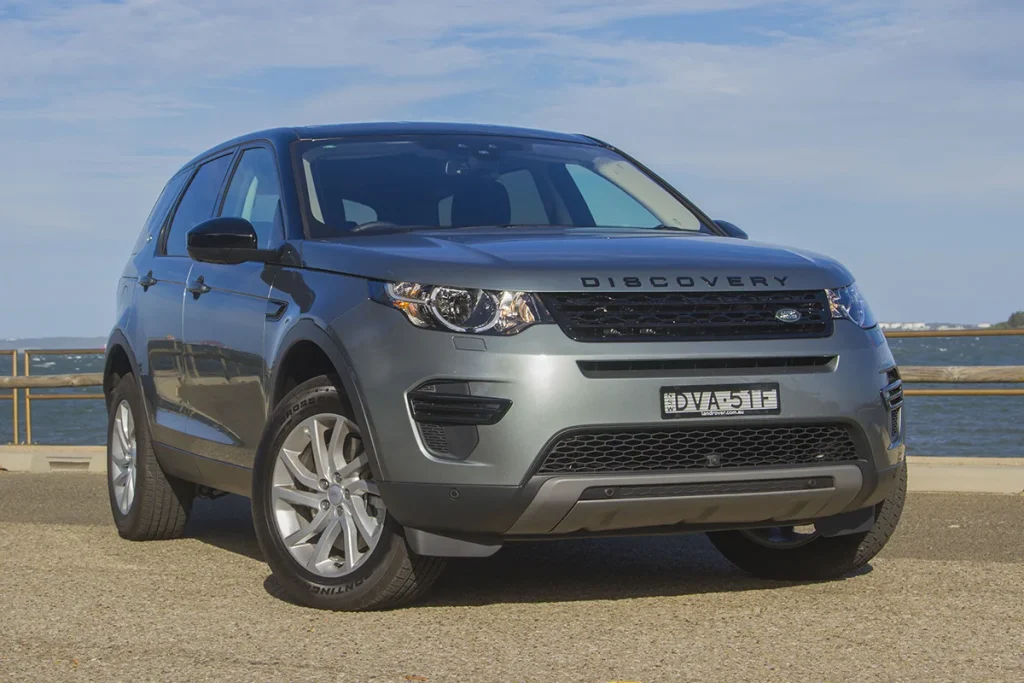
The Land Rover Discovery Sport stands out as one of the rare SUVs that truly lives up to the “Utility” in Sport Utility Vehicle, focusing on practicality rather than simply performance. Offering seven seats, ample space, and real off-road capability, it’s an excellent choice for adventurous families.
However, it also appeals to anyone who values a combination of practicality and ability in a luxurious package. Even if you don’t frequently take advantage of its off-road features, it’s reassuring to know that they’re there—similar to how knowing your expensive watch can survive extreme conditions offers peace of mind in case it’s accidentally dropped in water.
4. Chevrolet Cruze (2011–2015)
The early Cruze models suffered from cooling system failures, turbocharger issues, and electrical faults. Overheating and coolant leaks are two of the most common issues, sometimes leading to complete engine shutdowns. Many owners also report having their car die unexpectedly, especially in traffic, creating dangerous and frustrating situations.
The Chevrolet Cruze stands out in the crowded compact-car segment, a competitive category that includes over two dozen cars, such as the 2018 10Best Cars award winners like the Honda Civic Sport and the Volkswagen Golf.
Despite its competition, the Cruze manages to impress with a comfortable ride, a surprisingly spacious trunk, and a variety of high-tech, luxury-like features. However, while it shines in these areas, its powertrains fall short compared to its rivals.
The base model feels underpowered and lacks excitement, and while the diesel engine offers excellent fuel efficiency, it delivers uninspiring acceleration, which is less appealing when gas prices are low. Though the Cruze offers a range of acceptable options, those seeking true excellence may need to look elsewhere.
For 2019, the Cruze introduces several updates, including a more aggressive front grille and revised bumpers at both the front and rear.
It also gets updated taillamps, a new interior color, new wheel designs, and updated infotainment software. Additionally, the RS package now comes with black-painted window surrounds, emblems, and wheels.
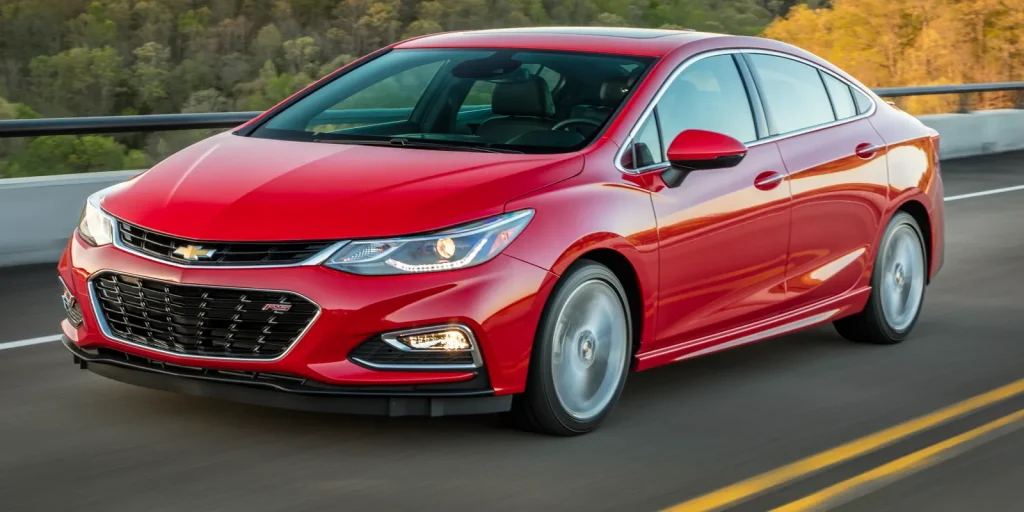
The starting price for the 2019 Chevrolet Cruze is $18,870, with the top-tier model priced at $24,395, depending on the trim and options. The L trim is priced at $18,870, the LS at $19,995, the LT at $22,595, and the Premier at $24,395.
The Cruze LT offers a compelling combination of features at a reasonable price. However, the standard six-speed manual transmission is a downside, making the six-speed automatic a worthwhile upgrade for those seeking a better driving experience.
Opting for the hatchback version of the Cruze enhances its practicality, and it comes with standard features such as cruise control, aluminum wheels, and a six-speaker stereo with SiriusXM satellite radio.
If the budget permits, the Convenience package, which adds keyless entry, push-button and remote start, heated front seats, and an eight-way power-adjustable driver’s seat, is a nice upgrade.
In terms of engine and performance, the base Cruze comes with a 153-hp turbocharged four-cylinder engine paired with a six-speed manual transmission. However, the manual transmission is not particularly enjoyable, as it features a light clutch pedal and long, imprecise shifter throws.
Upgrading to the six-speed automatic results in quicker acceleration and a more enjoyable driving experience. There’s also an available diesel engine, a turbocharged four-cylinder that pairs with a nine-speed automatic transmission.
While the diesel engine is louder and rougher than the gasoline version, it’s quiet enough at highway speeds to pass for a gasoline engine. On the road, the Cruze feels larger and more stable than its size suggests.
The steering is pleasantly weighted, and the car tracks well and responds eagerly to inputs. The soft suspension does cause some imprecision in handling when driven aggressively through corners, but it provides a smooth and comfortable ride over bumps and potholes.
5. Mini Cooper (especially 2007–2012)
As fun as they are to drive, early-generation Mini Coopers come with serious drawbacks. They are notorious for timing chain failures, water pump problems, and coolant system leaks.
Repairs are not only frequent but also expensive, and breakdowns often happen with little warning. These issues have left many owners stranded on the side of the road more than once.
Mini’s iconic models, the compact Cooper hatchback and convertible, receive an appealing refresh for 2025, featuring a comprehensive redesign that enhances both the car’s design and its features. The Cooper Electric was the first to debut with this update, confirming that the Cooper still retains its unmistakable Mini character.

The gasoline-powered versions, including the sportier S trim, share a similar updated look. All variants come equipped with a turbocharged four-cylinder engine paired with a seven-speed dual-clutch automatic transmission.
The base Cooper offers 161 horsepower, while the S trim boasts a more powerful 201 horsepower. Although the Cooper remains a small car, the changes to the cabin have created a more spacious and airy atmosphere. Additionally, Mini has improved the quality of the interior materials, giving the 2025 Cooper a more premium feel.

